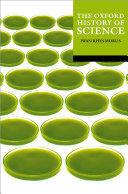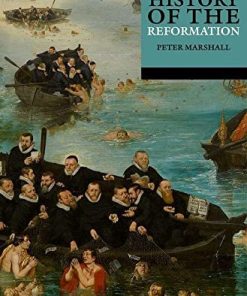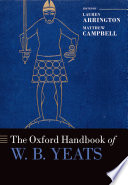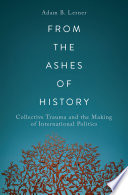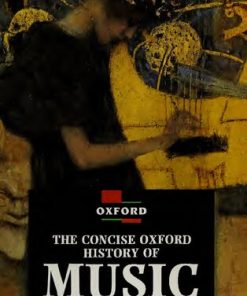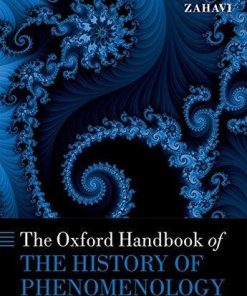The Oxford History of Phonology 1st edition by Elan Dresher 0192516906 9780192516909
$50.00 Original price was: $50.00.$25.00Current price is: $25.00.
The Oxford History of Phonology 1st edition by B. Elan Dresher – Ebook PDF Instant Download/DeliveryISBN: 0192516906 9780192516909
Full download The Oxford History of Phonology 1st edition after payment.
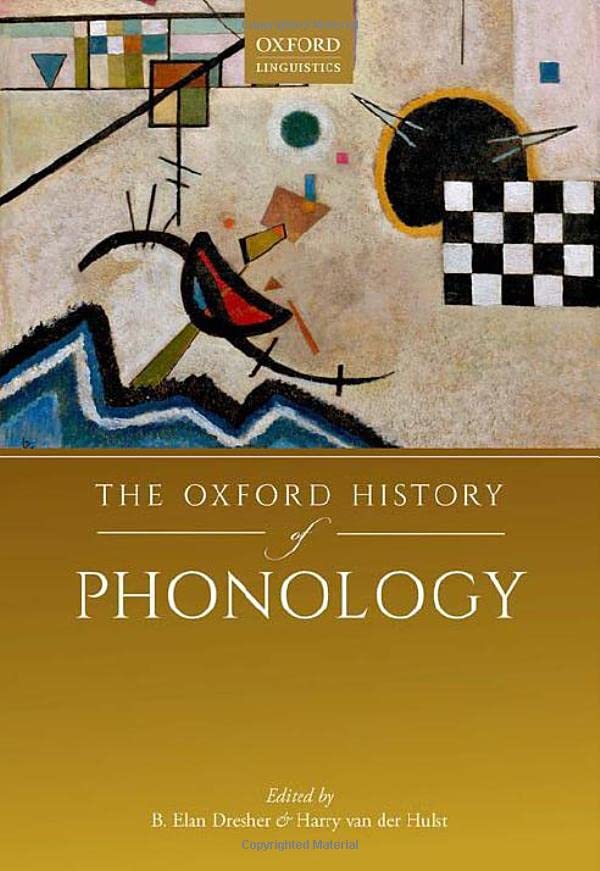
Product details:
ISBN-10 : 0192516906
ISBN-13 : 9780192516909
Author : B. Elan Dresher
This volume is the first to provide an up-to-date and comprehensive history of phonology from the earliest known examples of phonological thinking, through the rise of phonology as a field in the twentieth century, and up to the most recent advances. The volume is divided into five parts. Part I offers an account of writing systems along with chapters exploring the great ancient and medieval intellectual traditions of phonological thought that form the foundation of later thinking and continue to enrich phonological theory. Chapters in Part II describe the important schools and individuals of the late nineteenth and early twentieth centuries who shaped phonology as an organized scientific field. Part III examines mid-twentieth century developments in phonology in the Soviet Union, Northern and Western Europe, and North America; it continues with precursors to generative grammar, and culminates in a chapter on Chomsky and Halle’s The Sound Pattern of English (SPE). Part IV then shows how phonological theorists responded to SPE with respect to derivations, representations, and phonology-morphology interaction. Theories discussed include Dependency Phonology, Government Phonology, Constraint-and-Repair theories, and Optimality Theory. The part ends with a chapter on the study of variation. Finally, chapters in Part V look at new methods and approaches, covering phonetic explanation, corpora and phonological analysis, probabilistic phonology, computational modelling, models of phonological learning, and the evolution of phonology. This in-depth exploration of the history of phonology provides new perspectives on where phonology has been and sheds light on where it could go next.
The Oxford History of Phonology 1st Table of contents:
1. Introduction: Leading ideas in phonology
1.1 Previous histories of phonology
1.2 Plan of the volume
1.3 Leading ideas in phonology
1.4 Conclusion
I. Early insights in phonology
2. Writing systems
2.1 Introduction
2.2 Symbol systems before writing
2.3 The earliest writing: The discovery of phonology
2.4 Segments versus syllables in the development of writing systems
2.5 The influence of writing on phonological knowledge
2.6 Why phonology is crucial: The lesson of Blissymbolics
2.7 Summary
3. Pāṇini
3.1 Pāṇini’s grammar and its goals
3.2 Rules
3.3 Rule interaction
3.4 Simplicity, brevity, and generalization
3.5 Pāṇini’s impact on linguistics
4. The East Asian tradition
4.1 Introduction
4.2 Chinese
4.3 Japanese
4.4 Korean
4.5 Conclusion
5. The taṣrīf in the medieval Arabic grammatical tradition
5.1 Introduction
5.2 The taṣrīf according to some authors
5.3 Verbal morphology
5.4 Taṣrīf I or morphology
5.5 Taṣrīf II or phonology
5.6 Concluding remarks
6. The Greco-Roman tradition
6.1 Introduction
6.2 Segmental structure
6.3 Prosodic structure
6.3.2 The syllable
6.4 Dynamic aspects of phonology
6.5 Sound change and variation
6.6 Other key concepts
6.7 Conclusions: The legacy of the Greco-Roman tradition
6.8 Appendix: Authors, dates, and major works pertaining to phonology
7. Phonological phrasing: Approaches to grouping at lower levels of the prosodic hierarchy
7.1 Introduction
7.2 Early rhythmic determinism
7.3 Contemporary syntactic determinism
7.3.3 Submerged rhythmic determinism re-emerging
7.4 Summary
8. Nineteenth-century historical linguists’ contributions to phonology
8.1 Introduction
8.2 Phonology and its relationship with phonetics
8.3 Phonology as system and contrast
8.4 Representation and abstractness
8.5 Regularity and variation in phonology
8.6 Concluding remarks
II. The founders of phonology
9. The Kazan School: Jan Baudouin de Courtenay and Mikołaj Kruszewski
9.1 Historical background
9.2 Formation of the Kazan Linguistic Circle
9.3 Mikołaj Kruszewski
9.4 Jan Baudouin de Courtenay
9.5 Conclusion
10. Saussure and structural phonology
10.1 Introduction
10.2 The Mémoire (1879) and its impact on phonology
10.3 Saussure’s work in phonology in the 1880s and 1890s
10.4 The lectures on general linguistics (1907–1911) and the Cours de linguistique générale (1916)
10.5 Five common misapprehensions
10.6 The Cours and structuralist phonology
10.7 Conclusion
11. The Prague School: Nikolai Trubetzkoy and Roman Jakobson
11.1 Introduction
11.2 Prelude
11.3 The circle expands
11.4 The nature of oppositions and phonemic content
11.5 From correlations to universal distinctive features
11.6 Sprachbund: Phonetics and linguistic geography
11.7 Morphophonology
11.8 Towards a Second Prague School
12. John R. Firth and the London School
12.1 Introduction
12.2 Fundamentals of the technique of FPA
12.3 John R. Firth and the London School
12.4 FPA’s legacy in today’s phonology
13. Boas—Sapir—Bloomfield: The synchronicization of phonology in American linguistics
13.1 Introduction
13.2 Franz Boas (1858–1942) and the ‘exotic’ inventories and alternations on the Northwest Coast
13.3 Edward Sapir (1884–1939) and the doctrine of an ‘inner’, ‘organic’ phonetics empirically discoverable by analytic methods of distribution
13.4 Leonard Bloomfield (1887–1949) celebrates and codifies descriptive phonological theory
Editors’ note
14. The (early) history of sign language phonology
14.1 Introduction
14.2 What stood in the way of discovering sign phonology
14.3 A brief introduction to sign language phonology
14.4 The pre-linguistic era: Charles-Michel de L’Épée, Roch-Ambroise Cucurron Sicard, and Roch-Ambroise Auguste Bébian
14.5 La Mont West
14.6 William C. Stokoe
14.7 Important early dissertations on sign phonology
14.8 Edward Klima and Ursula Bellugi
14.9 The reception of Stokoe (1960) and Klima & Bellugi (1979) compared
14.10 From structuralist linguistics to generative approaches
14.11 The rise of sequential and multi-linear structure
14.12 Other domains of research
14.13 Conclusions: Relevance of and directions in sign phonology
III. Mid-twentieth-century developments in phonology
15. Phonology in the Soviet Union
15.1 Introduction
15.2 Historical outlook
15.3 The two schools
15.4 Morphophonology in the Soviet Union
15.5 Summary and further developments
16. Phonology in Glossematics in Northern and Western Europe
16.1 Introduction
16.2 Louis Hjelmslev and Glossematics in a historical context
16.3 Hjelmslev and Uldall as phonologists
16.4 Impact of Glossematics on the phonology of Danish
16.5 Influence of glossematic phonology in Northern and Western Europe
16.6 Phonotactics in Northern and Western Europe inside and outside Glossematics
16.7 The study of prosody in Northern and Western Europe outside the major schools
16.8 Concluding remarks: Glossematics and phonology in Northern and Western Europe
17. Mid-century American phonology: The post-Bloomfieldians
17.1 Introduction
17.2 Phonemes, allophones, and the phone
17.3 The heart of the matter
17.4 Postscript
18. Developments leading towards generative phonology
18.1 Introduction
18.2 Sources of generative phonology
18.3 Chomsky and Halle’s early revisions of phonological theory
18.4 Conclusions
19. The Sound Pattern of English and early generative phonology
19.1 Introduction
19.2 SPE: The general framework and model
19.3 English word stress
19.4 English Vowel Shift
19.5 Feature system
19.6 Chapter 9 and markedness
19.7 SPE: Reception, climate, and culture; refinements and extensions
19.8 Conclusion
IV. Phonology after SPE
20. Phonological derivation in early generative phonology
20.1 Introduction
20.2 The issue of abstractness
20.3 The challenge from Yawelmani (Yowlumne)
20.4 Two-stage models
20.5 Natural rule order
20.6 Conspiracies, (derivational and surface-structure) constraints, and global rules
20.7 The controversies of the 1970s in the light of subsequent developments
20.8 Summary and conclusion
21. Representations in generative phonology in the 1970s and 1980s
21.1 Introduction
21.2 Autosegmental Phonology
21.3 Syllables
21.4 Feature geometry
21.5 The core
21.6 The Metrical Theory of stress
21.7 Prosodic hierarchy
21.8 Prosodic Morphology
21.9 Conclusion
22. The interaction between phonology and morphosyntax in generative grammar
22.1 Introduction and scope
22.2 Representational management
22.3 Derivational management
23. Dependency Phonology
23.1 Introduction
23.2 The development of the use of dependency relations
23.3 The use of dependency at the suprasegmental level
23.4 The use of dependency at the segmental level
23.5 The internal structure of gestures: Vowels
23.6 The internal structure of gestures: The categorial properties
23.7 Post-classical DP developments
23.8 Conclusions
24. Government Phonology in historical perspective
24.1 Introduction
24.2 The internal structure of segments
24.3 External structural relations of segments
24.4 Government vs. licensing
24.5 Further developments
24.6 Conclusions
25. Historical notes on constraint-and-repair approaches
25.1 Introduction
25.2 Constraints in SPE
25.3 The emergence of output constraints
25.4 Constraint-and-repair models
25.5 Optimality Theory vis-à-vis constraint-and-repair theories
25.6 Conclusion
26. Optimality Theory
26.1 Introduction
26.2 Initial reception
26.3 The opacity debate
26.4 Theories of faithfulness: Containment and Correspondence
26.5 Theories of derivations: Stratal OT, Harmonic Serialism
26.6 Theories of constraint violation: Classic OT vs. Harmonic Grammar
26.7 Theories of variation: From unranked constraints to stochastic grammar
26.8 Theories of exceptions: Indexed constraints, cophonologies
26.9 Psychological realism
26.10 Applications to other fields
26.11 Conclusion
27. The study of variation
27.1 Introduction
27.2 The origins and early development of variationism
27.3 Elaborating the model with interaction
27.4 Incorporation into mainstream phonology
27.5 Exemplar theoretic approaches
27.6 Looking forward
27.7 Glancing back
V. New methods and approaches
28. Phonetic explanation in phonology
28.1 Introduction
28.2 Phonemes cannot be identified by their phonetics
28.3 Universal features
28.4 Phonetic evidence for distinctive features
28.5 Phonetic representations in The Sound Pattern of English
28.6 Markedness conventions
28.7 Phonetic explanation
28.8 Natural Phonology
28.9 Form and substance
28.10 Should phonology be separated from phonetics?
28.11 Concluding remarks
29. Corpora and phonological analysis
29.1 Introduction
29.2 Advantages and disadvantages to corpus-based phonology
29.3 Example applications
29.4 Methodologies, tools, and resources
29.5 Conclusion
30. More than seventy years of probabilistic phonology
30.1 Introduction
30.2 Probabilities of what?
30.3 Statistical learning and productivity
30.4 Relating phonology to phonetics and to morphophonology
30.5 Correlations of probabilities with linguistic behaviour
30.6 Probability matters vs probability-matching
30.7 Conclusion
31. Phonological theory and computational modelling
31.1 Introduction
31.2 Finite-state models of derivational phonology
31.3 Computational models of Optimality Theory
31.4 Computational modelling and modern phonological theory
31.5 Conclusion
32. Learnability in phonology
32.1 ♫ What a short strange trip it’s been
32.2 Learning and the computational mind
32.3 Borrowing outranks invention
32.4 A short guide to hard problems
32.5 Tensions, contemporary and ancient
32.6 Conclusion
33. Phonology and evolution
33.1 Introduction
33.2 The earliest studies of language
33.3 Before the 20th century: Laying the foundations of evolutionary linguistics
33.4 Evolution of the vocal tract: A century-long debate
33.5 Phonological change as cultural evolution: Towards modern theories
33.6 Conclusion
People also search for The Oxford History of Phonology 1st:
the oxford history of english
the oxford handbook of polysynthesis
the oxford handbook of language prosody
the oxford history
oxford history of phonology
Tags:
The Oxford History,Phonology,Elan Dresher,comprehensive history,phonology
You may also like…
& Scottish Poetry
Politics & Philosophy - Politics




